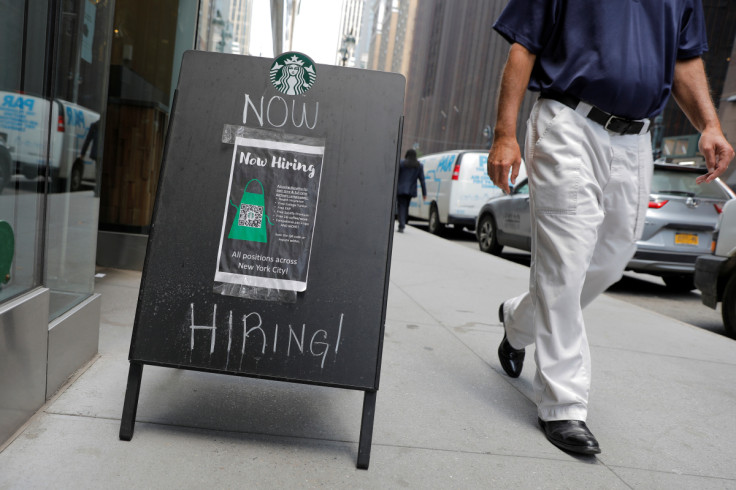U.S. Labor Market Still Tight; Monthly Producer Inflation Accelerates

The number of Americans filing new claims for unemployment benefits unexpectedly fell last week, offering more evidence of the economy's resilience despite tighter monetary policy.
Other data on Thursday showed monthly producer prices increasing by the most in seven months in January as the cost of energy products surged. Even stripping out energy and other volatile components, underlying producer inflation rose at its fastest pace since last March.
The reports, which followed data this week showing robust growth in retail sales in January and an acceleration in monthly consumer prices, further stoked financial market fears that the Federal Reserve could maintain its interest hiking campaign through summer.
"The headline-grabbing layoff announcements of the last few months do not seem representative of broader economic trends," said Bill Adams, chief economist at Comerica Bank in Dallas.
"The Fed's focus is squarely on America's stubbornly high inflation. I now see the Fed's most likely path forward as a quarter percentage point rate hike at each of their next three decisions, in March, May and June."
Initial claims for state unemployment benefits slipped 1,000 to a seasonally adjusted 194,000 for the week ended Feb. 11, the Labor Department said. Economists polled by Reuters had forecast 200,000 claims for the latest week.
Unadjusted claims dropped 9,280 to 224,727 last week, reflecting a sharp decrease in applications in California. There were also significant declines in claims in Illinois and Pennsylvania, offseting increases in Ohio and Michigan.
Claims remain low despite high-profile layoffs in the technology sector and in interest-rate sensitive industries. Some of the laid-off workers are likely finding new work or are delaying filing for benefits because of severance packages.
Companies are generally reluctant to lay off workers after experiencing difficulties recruiting during the pandemic. The National Federation of Independent Businesses reported this week that the share of small businesses reporting job openings increased in January, saying this suggested that "owners are still seeing opportunities to grow their business."
Government data showed this month that there were 1.9 job openings for every unemployed person in December.
"Labor market conditions remain exceptionally tight," said Michael Pearce, lead U.S. economist at Oxford Economics in New York. "That is consistent with most other indicators which suggest that the labor market is still carrying plenty of momentum."
The claims report also showed the number of people receiving benefits after an initial week of aid, a proxy for hiring, increased 16,000 to 1.696 million during the week ending Feb 4.
Labor market resilience is marked by the lowest unemployment rate in more than 53 years. The Fed has raised its policy rate by 450 basis points since last March from near zero to a 4.50%-4.75% range, with the bulk of the increases between May and December. Though two additional rate hikes of 25 basis points are expected in March and May, financial markets are betting on another increase in June.
Stocks on Wall Street were trading lower. The dollar gained versus a basket of currencies. U.S. Treasury prices fell.
HOUSING MARKET DEPRESSED
A second report from the Labor Department on Thursday showed the producer price index for final demand rebounded 0.7% in January, the largest increase since June, after decreasing 0.2% in December. The rise was led by a 1.2% advance in goods prices, which followed a 1.4% decline in December.
A 6.2% jump gasoline prices accounted for nearly a third of the rise in goods. There were also increases in prices for residential natural gas, diesel fuel, jet fuel, soft drinks and motor vehicles.
But fresh and dry vegetable prices tumbled 33.5%. Excluding food and energy, goods prices shot up 0.6%. That was the biggest increase in the so-called core goods prices in eight months and followed a 0.1 gain in December.
Services increased 0.4%, matching December's gain. They were driven by a 1.4% jump in hospital outpatient care. Portfolio management fees also rose as did airline fares.
These feed into the calculation of the personal consumption expenditures (PCE) price index, one of the key inflation measures tracked by the Fed for monetary policy.
In the 12 months through January, the PPI increased 6.0% after advancing 6.5% in December. Excluding food, energy and trade, producer prices rose 0.6%, the biggest gain in 10 months. The core PPI climbed 0.2% in December.
With the CPI and PPI data in hand, economists estimate that the core PCE price index rose 0.5% in January after increasing 0.3 in December. In the 12-months through January, the core PCE price index is forecast advancing 4.5% after increasing 4.4% in December. The Fed has a 2% inflation target.
The road to low inflation will likely be bumpy, with a survey from the Philadelphia Fed showing a gauge of prices paid for inputs by factories in the mid-Atlantic region rose for the first time in 10 months in February.
A measure of prices received by manufacturers, however, dropped to the lowest level in two years.
News on the housing market, the biggest casualty of the U.S. central bank's aggressive policy tightening stance, remained gloomy, though an improvement in homebuilder confidence this month offered the hope it was close to turning the corner.
Single-family housing starts, which account for the bulk of U.S. homebuilding, dropped 4.3% to a seasonally adjusted annual rate of 841,000 units in January, the Commerce Department said in a fourth report. Starts for housing projects with five units or more fell 5.4% to a rate of 457,000 units.
Overall, housing starts dropped 4.5% to a rate of 1.309 million units, the lowest level since June 2020. Single-family building permits fell 1.8% to a 718,000-unit pace.
"Recent signs of bottoming in housing demand suggest new construction could even start to more noticeably rise again, especially into the spring and summer when housing activity seasonally picks up," said Veronica Clark, an economist at Citigroup in New York.
© Copyright Thomson Reuters 2024. All rights reserved.





















